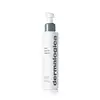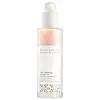What's inside
What's inside
 Key Ingredients
Key Ingredients

 Benefits
Benefits

 Concerns
Concerns

 Ingredients Side-by-side
Ingredients Side-by-side

Water
Skin ConditioningCocamidopropyl Hydroxysultaine
CleansingGlycolic Acid
BufferingGlycerin
HumectantPEG-6 Cocamide
EmulsifyingPolyacrylate Crosspolymer-6
Emulsion StabilisingDisodium Cocoyl Glutamate
CleansingHydroxyacetophenone
AntioxidantSuccinoglycan
Skin ConditioningSimmondsia Chinensis Seed Oil
EmollientCalendula Officinalis Flower Extract
MaskingCitrus Aurantium Dulcis Peel Oil
MaskingCitrus Paradisi Peel Oil
MaskingLeuconostoc/Radish Root Ferment Filtrate
AntimicrobialUrea
BufferingAllantoin
Skin ConditioningPolyquaternium-51
Skin ConditioningTrehalose
HumectantCaprylyl Glycol
EmollientSodium Hyaluronate
HumectantTocopherol
AntioxidantHydrogenated Palm Glycerides Citrate
EmollientGlyceryl Oleate
EmollientCoconut Acid
Cleansing1,2-Hexanediol
Skin ConditioningT-Butyl Alcohol
PerfumingCoco-Glucoside
CleansingSodium PCA
HumectantSodium Chloride
MaskingSodium Hydroxide
BufferingCitric Acid
BufferingPotassium Sorbate
PreservativeSodium Benzoate
MaskingLimonene
PerfumingWater, Cocamidopropyl Hydroxysultaine, Glycolic Acid, Glycerin, PEG-6 Cocamide, Polyacrylate Crosspolymer-6, Disodium Cocoyl Glutamate, Hydroxyacetophenone, Succinoglycan, Simmondsia Chinensis Seed Oil, Calendula Officinalis Flower Extract, Citrus Aurantium Dulcis Peel Oil, Citrus Paradisi Peel Oil, Leuconostoc/Radish Root Ferment Filtrate, Urea, Allantoin, Polyquaternium-51, Trehalose, Caprylyl Glycol, Sodium Hyaluronate, Tocopherol, Hydrogenated Palm Glycerides Citrate, Glyceryl Oleate, Coconut Acid, 1,2-Hexanediol, T-Butyl Alcohol, Coco-Glucoside, Sodium PCA, Sodium Chloride, Sodium Hydroxide, Citric Acid, Potassium Sorbate, Sodium Benzoate, Limonene
Water
Skin ConditioningGlycerin
HumectantSodium Cocoyl Isethionate
CleansingSodium Hyaluronate
HumectantSodium Methyl Cocoyl Taurate
CleansingCetearyl Alcohol
EmollientLactobacillus/Punica Granatum Fruit Ferment Extract
Skin ConditioningPolyacrylate-33
Sodium Cocoyl Apple Amino Acids
Skin ConditioningDehydroacetic Acid
PreservativeBenzyl Alcohol
PerfumingTromethamine
BufferingCarica Papaya Fruit Extract
Skin ConditioningPotassium Sorbate
PreservativeEclipta Prostrata Extract
Skin ConditioningMelia Azadirachta Leaf Extract
Skin ConditioningMoringa Oleifera Seed Oil
EmollientGlycolic Acid
BufferingLactic Acid
BufferingAscorbic Acid
AntioxidantLinoleic Acid
CleansingSimmondsia Chinensis Seed Oil
EmollientLavandula Angustifolia Oil
MaskingCitrus Aurantium Dulcis Oil
MaskingSalvia Officinalis Leaf Extract
CleansingArnica Montana Flower Extract
MaskingBorago Officinalis Extract
EmollientCalendula Officinalis Flower Extract
MaskingChamomilla Recutita Flower Extract
MaskingCeramide Ng
Skin ConditioningAlcohol
AntimicrobialWater, Glycerin, Sodium Cocoyl Isethionate, Sodium Hyaluronate, Sodium Methyl Cocoyl Taurate, Cetearyl Alcohol, Lactobacillus/Punica Granatum Fruit Ferment Extract, Polyacrylate-33, Sodium Cocoyl Apple Amino Acids, Dehydroacetic Acid, Benzyl Alcohol, Tromethamine, Carica Papaya Fruit Extract, Potassium Sorbate, Eclipta Prostrata Extract, Melia Azadirachta Leaf Extract, Moringa Oleifera Seed Oil, Glycolic Acid, Lactic Acid, Ascorbic Acid, Linoleic Acid, Simmondsia Chinensis Seed Oil, Lavandula Angustifolia Oil, Citrus Aurantium Dulcis Oil, Salvia Officinalis Leaf Extract, Arnica Montana Flower Extract, Borago Officinalis Extract, Calendula Officinalis Flower Extract, Chamomilla Recutita Flower Extract, Ceramide Ng, Alcohol
 Reviews
Reviews

Alternatives
Ingredients Explained
These ingredients are found in both products.
Ingredients higher up in an ingredient list are typically present in a larger amount.
Calendula Officinalis Flower Extract comes from the common Marigold plant. This ingredient is a skin conditioner.
Marigolds contain flavonoids. Flavonoids are a group of substances found naturally in plants. They possess antioxidant and inflammation properties.
This ingredient soothes skin inflammation by inhibiting inhibiting a part of the inflammation process.
Marigolds have been used in traditional medicine throughout Asia and Europe.
Learn more about Calendula Officinalis Flower ExtractGlycerin is already naturally found in your skin. It helps moisturize and protect your skin.
A study from 2016 found glycerin to be more effective as a humectant than AHAs and hyaluronic acid.
As a humectant, it helps the skin stay hydrated by pulling moisture to your skin. The low molecular weight of glycerin allows it to pull moisture into the deeper layers of your skin.
Hydrated skin improves your skin barrier; Your skin barrier helps protect against irritants and bacteria.
Glycerin has also been found to have antimicrobial and antiviral properties. Due to these properties, glycerin is often used in wound and burn treatments.
In cosmetics, glycerin is usually derived from plants such as soybean or palm. However, it can also be sourced from animals, such as tallow or animal fat.
This ingredient is organic, colorless, odorless, and non-toxic.
Glycerin is the name for this ingredient in American English. British English uses Glycerol/Glycerine.
Learn more about GlycerinGlycolic Acid is arguably the most famous alpha hydroxy acid (AHA) with tons of research backing its benefits.
It is found naturally in sugar cane but the form used in skincare is usually synthetic for purity and stability.
Glycolic acid removes the top layer of dead skin cells to allow newer and fresher ones to emerge.
AHAs work by breaking down the structural “glue” that holds old skin cells in place. When that buildup is gone, your skin can renew itself more efficiently.
Research also shows glycolic acid stimulates collagen production, helping to firm and thicken the skin over time. This is one of its biggest advantages over other AHAs.
Overall, glycolic acid helps with:
Fun fact: Glycolic acid boosts skin hydration by helping it produce molecules that increase hyaluronic acid naturally.
To work best, glycolic acid products should have a pH between 3-4 (that’s where exfoliation is most effective but still gentle on skin).
The pH and concentration of a product are key to its effectiveness:
It is normal to feel a slight stinging sensation when using glycolic acid. This usually fades as your skin adjusts.
Because glycolic acid has the smallest molecular size in the AHA family, it can penetrate deeper, which enhances its effectiveness but also makes it more likely to irritate sensitive skin.
If your skin is very sensitive or prone to rosacea, glycolic acid may be too strong; in that case, try milder options like lactic acid or a PHA instead.
Recent studies suggest glycolic acid might even help protect against UV damage. But don’t skip sunscreen! Freshly exfoliated skin is more sensitive to the sun.
Glycolic acid is a skincare superstar. It smooths, brightens, hydrates, and firms the skin. Unless you’re highly sensitive, it’s well worth adding to your routine.
Read more about some other popular AHA's here:
Learn more about Glycolic AcidPotassium Sorbate is a preservative used to prevent yeast and mold in products. It is commonly found in both cosmetic and food products.
This ingredient comes from potassium salt derived from sorbic acid. Sorbic acid is a natural antibiotic and effective against fungus.
Both potassium sorbate and sorbic acid can be found in baked goods, cheeses, dried meats, dried fruit, ice cream, pickles, wine, yogurt, and more.
You'll often find this ingredient used with other preservatives.
Learn more about Potassium SorbateThis oil comes from the seeds of the desert shrub called Jojoba. It is more commonly known as jojoba oil, a non-comedogenic oil.
Jojoba oil does not contain fragrance and has many fatty-acids, making it a great soothing ingredient.
It also contains Vitamin E, a great moisturizing ingredient. Vitamin E is also an antioxidant and protects your skin against oxidative damage.
This ingredient humectant properties, meaning it helps draw moisture from the air. This helps keep your skin hydrated.
While jojoba has antibacterial properties, it is only able to kill some strains of bacteria.
Studies also show it helps in wound healing. In fact, Indigenous cultures have used jojoba as a moisturizer and to help treat burns for centuries.
Fun fact: Jojoba oil similar to natural human skin sebum, so it has a great effect on dry skin. It is also promising with helping to regulate sebum production.
Due to its fatty acid content, Jojoba oil may not be fungal acne safe. We recommend speaking with a professional if you have any concerns.
Learn more about Simmondsia Chinensis Seed OilSodium Hyaluronate is hyaluronic acid's salt form. It is commonly derived from the sodium salt of hyaluronic acid.
Like hyaluronic acid, it is great at holding water and acts as a humectant. This makes it a great skin hydrating ingredient.
Sodium Hyaluronate is naturally occurring in our bodies and is mostly found in eye fluid and joints.
These are some other common types of Hyaluronic Acid:
Learn more about Sodium HyaluronateWater. It's the most common cosmetic ingredient of all. You'll usually see it at the top of ingredient lists, meaning that it makes up the largest part of the product.
So why is it so popular? Water most often acts as a solvent - this means that it helps dissolve other ingredients into the formulation.
You'll also recognize water as that liquid we all need to stay alive. If you see this, drink a glass of water. Stay hydrated!
Learn more about Water